伝承薬(フランス産のライラック(=リラの花)エキス)に基づいて、ドイツで開発された
「2型糖尿病」の特効薬(メトフォルミン)で、欧州では半世紀以上使用されて
いる安全かつ安価な薬 (一日の薬価が30ー40円) が、最近、癌やNFの治療
にも有望であるという動物実験データが出ています。
従って、NZ産プロポリス(Bio 30)を飲んでも「現状維持」(腫瘍の増殖
や発生は抑えるが、腫瘍が萎縮しない)という場合には、服用量を2ー3倍に増
やすか、メトフォルミン (塩酸) 錠を併用 (250 mg 錠を一日2ー3回服用)
することをお勧めします。
メトフォルミン (塩酸) 錠 (メルビン錠):
http://www.interq.or.jp/ox/dwm/se/se39/se3962002.html
250mg 錠, 10円弱、 一日2ー3錠服用、最高(一日)1000mg まで
禁忌: 妊娠中、乳酸アシドーシス(酸血症)、腎不全、うっ血性心不全の患者
は、(副作用が出る可能性があるので) 使用を避ける。
2010年1月30日土曜日
2010年1月28日木曜日
Metformin: An Old Synthetic Anti-diabetic Drug
that Could Serve as an Anti-Cancer Drug and Expand Life Span.
Metformin (N-dimethyl formin) is an inexpensive and safe oral anti-diabetic
(prescription) drug, the first-line synthetic drug of choice for the treatment
of type 2 diabetes, particularly in overweight and obese people. It is the
simplest and most potent version of natural anti-diabetic biguanides (phenformin
and buformin) from Galega officinalis, a herbal weed called French lilac.
Though first synthesized in 1922 by Emil Werner and James Belland and found
in 1929 by Slotta and Tschesche to reduce blood sugar in rabbits, it was
forgotten for a few decades until 1957, when French physician Jean Sterne
(1909-1997)published the first clinical trial of metformin as a treatment for diabetes.
It was then introduced to UK in 1958, Canada in 1972, and US in 1995.
However, around the turn of century (2001-2002), a few groups found that Metformin
activates the kinase AMPK which is essential for glucose uptake into cells.
Interestingly, AMPK contributes to the activation of the tumor suppressing
transcription factor "FOXO" which is essential for longevity in mammals
and nematodes such as C. elegans. In other words Metformin could serve as
an "elixir" and anti-cancer drug as well.
Parviz Pour's team at University of Nebraska Medical Center was among the
first groups who realized the close relationship between diabetes and cancer,
in particular pancreatic cancer, and actually proved for the first time
that Metforming can prevent the development of pancreatic cancer in hamsters:
Schneider, M., Matsuzaki, H., Haorah, J., Ulrich, A., Standop, J., Ding,
XZ, Adrian, T., Pour, P. (2001).
Prevention of pancreatic cancer induction in hamsters by metformin.
Gastroenterology, 120, 1263-70.
A few papers suggest that Metformin causes its anti-cancer action not only through the AMPK-dependent pathway, but also through an AMPK-dispensable pathway.
Since this drug blocks angiogenesis and inflammation both of which require the kinase PAK1, I suspect that, like propolis and an old drug "Ivermectin", this drug must inactivate PAK1 somehow. In this context, it should be worth to note that there are several precedents among natural anti-cancer/anti-diabetic products that both activate AMPK and inactivate PAK: CAPE in propolis, resveratrol (R3) in red grapes, curcumin in Indian curry, capsaicin in Chili pepper, and berberine. Indeed, a 2010 paper from Makoto Taketo's group at Kyoto University clearly indicates that the kinase LKB1, which activates AMPK, inactivates PAK1 directly. In other words, Merformin, which activates LKB1, eventually both inactivates PAK1 and activates AMPK.
These examples even prompt us to hypothesize that they activate AMPK by inactivating PAK which might normally suppresses AMPK. Thus, it is not a surprise that Metformin inhibits the growth of breast and ovarian cancer cells in vitro as well as pancreatic cancer xenograft in mice, all of which require PAK1. So it would be worth testing its therapeutic effect on other formidable PAK1-dependent tumors such as those associated with NF (neurofibromatosis) and TSC (Tuberous Sclerosis).
Here are a few recent reports, suggesting its anti-cancer and life-span
expanding properties:
1) Gotlieb, W., Saumet, J., Beauchamp, M., Gu, J., Lau, S., Pollak, M., Bruchim,I.(2008).
In vitro metformin anti-neoplastic activity in epithelial ovarian cancer.
Gynecol Oncol. 110, 246-50.
Abstract:
OBJECTIVE: Metformin, a commonly used drug in the treatment of type II diabetes,
may reduce cancer risk and improve cancer prognosis. We evaluated its effect
on epithelial ovarian cancer cell lines.
METHODS: The OVCAR-3 and OVCAR-4 cell lines were exposed to metformin with
and without cisplatin. Cytotoxicity assays were performed in triplicates
using the Alamar colorimetric assay. Levels of total and phosphorylated
AMPK, p70S6K and S6K were evaluated by Western blotting following exposure
to metformin.
RESULTS: Metformin induces dose- and time-dependent growth inhibition of
OVCAR-3 and OVCAR-4 cell lines. Metformin potentiated the effect of cisplatin
in vitro. Metformin growth inhibition was partly abolished by the AMPK inhibitor,
compound C. Western blotting demonstrated that metformin at cytotoxic concentrations,
induced AMPK phosphorylation and decreased p70S6K and S6K phosphorylation,
suggesting the mechanism for its anti-proliferative action.
CONCLUSION: Metformin significantly inhibits the growth of ovarian cancer
cell lines and potentiates cisplatin. Further pre-clinical studies are being
conducted to determine the applicability of metformin in the treatment of
ovarian cancer.
2) Irina Alimova, Bolin Liu, Zeying Fan, Susan Edgerton, Thomas Dillon,
Stuart Lind and Ann Thor (2009).
Metformin inhibits breast cancer cell growth, colony formation and induces
cell cycle arrest in vitro
Cell Cycle, 8, 909 - 915
Abstract:
The anti-diabetic drug metformin reduces human cancer incidence and improves
the survival of cancer patients, including those with breast cancer. We
studied the activity of metformin against diverse molecular subtypes of
breast cancer cell lines in vitro. Metformin showed biological activity
against all estrogen receptor (ER) positive and negative, ErbB2 normal and
abnormal breast cancer cell lines tested. It inhibited cellular proliferation,
reduced colony formation and caused partial cell cycle arrest at the G1
checkpoint. Metformin did not induce apoptosis in luminal A, B or ErbB2 subtype
breast cancer cell lines. At the molecular level, metformin causes a reduction
of cyclin D1 and E2F1 expression, but with no changes in CDK inhibitors
(either p27 or p21). It inhibited the kinase activity of ERK and Akt, as
well as the target of rapamycin (TOR) in all breast cancer cells. In ErbB2-over-expressing breast cancer cell lines, metformin reduced both expression (at higher concentrations) and Tyr-kinase activity of ErbB2 (at lower concentrations). These data suggest that metformin may have potential therapeutic utility against a wide variety of breast cancer cells.
3) Brian Onken and Monica Driscoll (2010).
Metformin Induces a Dietary Restriction-like State and the Oxidative Stress
Response to Extend C. elegans Healthspan via AMPK, LKB1, and SKN-1
PLoS One. 5, e8758.
Abstract
Metformin, a biguanide drug commonly used to treat type-2 diabetes, has
been noted to extend health span of nondiabetic mice, but this outcome,
and the molecular mechanisms that underlie it, have received relatively
little experimental attention. To develop a genetic model for study of biguanide
effects on health span, we investigated metformin impact on aging C. elegans.
We found that metformin increases nematode health span, slowing lipofuscin
accumulation, extending median life span, and prolonging youthful locomotory
ability in a dose-dependent manner. Genetic data suggest that metformin
acts through a mechanism similar to that operative in eating-impaired dietary
restriction (DR) mutants, but independent of the insulin signaling pathway.
Energy sensor AMPK and its activator LKB1, which are activated in mammals
by metformin treatment, are essential for health benefits in C. elegans,
suggesting that metformin engages a metabolic loop conserved across phyla.
We also show that the conserved oxidative stress-responsive transcription
factor SKN-1/Nrf2 is essential for metformin health span benefits in C.
elegans, a mechanistic requirement not previously described in mammals.
skn-1, which functions in nematode sensory neurons to promote DR longevity
benefits and in intestines for oxidative stress resistance life span benefits,
must be expressed in both neurons and intestines for metformin-promoted
health span extension, supporting that metformin improves healthy middle-life
aging by activating both DR and antioxidant defense longevity pathways.
(prescription) drug, the first-line synthetic drug of choice for the treatment
of type 2 diabetes, particularly in overweight and obese people. It is the
simplest and most potent version of natural anti-diabetic biguanides (phenformin
and buformin) from Galega officinalis, a herbal weed called French lilac.
Though first synthesized in 1922 by Emil Werner and James Belland and found
in 1929 by Slotta and Tschesche to reduce blood sugar in rabbits, it was
forgotten for a few decades until 1957, when French physician Jean Sterne
(1909-1997)published the first clinical trial of metformin as a treatment for diabetes.
It was then introduced to UK in 1958, Canada in 1972, and US in 1995.
However, around the turn of century (2001-2002), a few groups found that Metformin
activates the kinase AMPK which is essential for glucose uptake into cells.
Interestingly, AMPK contributes to the activation of the tumor suppressing
transcription factor "FOXO" which is essential for longevity in mammals
and nematodes such as C. elegans. In other words Metformin could serve as
an "elixir" and anti-cancer drug as well.
Parviz Pour's team at University of Nebraska Medical Center was among the
first groups who realized the close relationship between diabetes and cancer,
in particular pancreatic cancer, and actually proved for the first time
that Metforming can prevent the development of pancreatic cancer in hamsters:
Schneider, M., Matsuzaki, H., Haorah, J., Ulrich, A., Standop, J., Ding,
XZ, Adrian, T., Pour, P. (2001).
Prevention of pancreatic cancer induction in hamsters by metformin.
Gastroenterology, 120, 1263-70.
A few papers suggest that Metformin causes its anti-cancer action not only through the AMPK-dependent pathway, but also through an AMPK-dispensable pathway.
Since this drug blocks angiogenesis and inflammation both of which require the kinase PAK1, I suspect that, like propolis and an old drug "Ivermectin", this drug must inactivate PAK1 somehow. In this context, it should be worth to note that there are several precedents among natural anti-cancer/anti-diabetic products that both activate AMPK and inactivate PAK: CAPE in propolis, resveratrol (R3) in red grapes, curcumin in Indian curry, capsaicin in Chili pepper, and berberine. Indeed, a 2010 paper from Makoto Taketo's group at Kyoto University clearly indicates that the kinase LKB1, which activates AMPK, inactivates PAK1 directly. In other words, Merformin, which activates LKB1, eventually both inactivates PAK1 and activates AMPK.
These examples even prompt us to hypothesize that they activate AMPK by inactivating PAK which might normally suppresses AMPK. Thus, it is not a surprise that Metformin inhibits the growth of breast and ovarian cancer cells in vitro as well as pancreatic cancer xenograft in mice, all of which require PAK1. So it would be worth testing its therapeutic effect on other formidable PAK1-dependent tumors such as those associated with NF (neurofibromatosis) and TSC (Tuberous Sclerosis).
Here are a few recent reports, suggesting its anti-cancer and life-span
expanding properties:
1) Gotlieb, W., Saumet, J., Beauchamp, M., Gu, J., Lau, S., Pollak, M., Bruchim,I.(2008).
In vitro metformin anti-neoplastic activity in epithelial ovarian cancer.
Gynecol Oncol. 110, 246-50.
Abstract:
OBJECTIVE: Metformin, a commonly used drug in the treatment of type II diabetes,
may reduce cancer risk and improve cancer prognosis. We evaluated its effect
on epithelial ovarian cancer cell lines.
METHODS: The OVCAR-3 and OVCAR-4 cell lines were exposed to metformin with
and without cisplatin. Cytotoxicity assays were performed in triplicates
using the Alamar colorimetric assay. Levels of total and phosphorylated
AMPK, p70S6K and S6K were evaluated by Western blotting following exposure
to metformin.
RESULTS: Metformin induces dose- and time-dependent growth inhibition of
OVCAR-3 and OVCAR-4 cell lines. Metformin potentiated the effect of cisplatin
in vitro. Metformin growth inhibition was partly abolished by the AMPK inhibitor,
compound C. Western blotting demonstrated that metformin at cytotoxic concentrations,
induced AMPK phosphorylation and decreased p70S6K and S6K phosphorylation,
suggesting the mechanism for its anti-proliferative action.
CONCLUSION: Metformin significantly inhibits the growth of ovarian cancer
cell lines and potentiates cisplatin. Further pre-clinical studies are being
conducted to determine the applicability of metformin in the treatment of
ovarian cancer.
2) Irina Alimova, Bolin Liu, Zeying Fan, Susan Edgerton, Thomas Dillon,
Stuart Lind and Ann Thor (2009).
Metformin inhibits breast cancer cell growth, colony formation and induces
cell cycle arrest in vitro
Cell Cycle, 8, 909 - 915
Abstract:
The anti-diabetic drug metformin reduces human cancer incidence and improves
the survival of cancer patients, including those with breast cancer. We
studied the activity of metformin against diverse molecular subtypes of
breast cancer cell lines in vitro. Metformin showed biological activity
against all estrogen receptor (ER) positive and negative, ErbB2 normal and
abnormal breast cancer cell lines tested. It inhibited cellular proliferation,
reduced colony formation and caused partial cell cycle arrest at the G1
checkpoint. Metformin did not induce apoptosis in luminal A, B or ErbB2 subtype
breast cancer cell lines. At the molecular level, metformin causes a reduction
of cyclin D1 and E2F1 expression, but with no changes in CDK inhibitors
(either p27 or p21). It inhibited the kinase activity of ERK and Akt, as
well as the target of rapamycin (TOR) in all breast cancer cells. In ErbB2-over-expressing breast cancer cell lines, metformin reduced both expression (at higher concentrations) and Tyr-kinase activity of ErbB2 (at lower concentrations). These data suggest that metformin may have potential therapeutic utility against a wide variety of breast cancer cells.
3) Brian Onken and Monica Driscoll (2010).
Metformin Induces a Dietary Restriction-like State and the Oxidative Stress
Response to Extend C. elegans Healthspan via AMPK, LKB1, and SKN-1
PLoS One. 5, e8758.
Abstract
Metformin, a biguanide drug commonly used to treat type-2 diabetes, has
been noted to extend health span of nondiabetic mice, but this outcome,
and the molecular mechanisms that underlie it, have received relatively
little experimental attention. To develop a genetic model for study of biguanide
effects on health span, we investigated metformin impact on aging C. elegans.
We found that metformin increases nematode health span, slowing lipofuscin
accumulation, extending median life span, and prolonging youthful locomotory
ability in a dose-dependent manner. Genetic data suggest that metformin
acts through a mechanism similar to that operative in eating-impaired dietary
restriction (DR) mutants, but independent of the insulin signaling pathway.
Energy sensor AMPK and its activator LKB1, which are activated in mammals
by metformin treatment, are essential for health benefits in C. elegans,
suggesting that metformin engages a metabolic loop conserved across phyla.
We also show that the conserved oxidative stress-responsive transcription
factor SKN-1/Nrf2 is essential for metformin health span benefits in C.
elegans, a mechanistic requirement not previously described in mammals.
skn-1, which functions in nematode sensory neurons to promote DR longevity
benefits and in intestines for oxidative stress resistance life span benefits,
must be expressed in both neurons and intestines for metformin-promoted
health span extension, supporting that metformin improves healthy middle-life
aging by activating both DR and antioxidant defense longevity pathways.
2010年1月19日火曜日
来たる参議院選挙に向けて:
民主党政権の「イメージ・チェンジ」(衣更え)
7月に予定されている参議院選挙で民主党が過半数を獲得するためには、
内閣の大幅改造で民主党政権の「イメージ・チェンジ」が必要であろう。まず
(金銭問題に引続き疑惑を残す)小沢さんは幹事長を辞めるべきだ。
次に(小沢さんの「傀儡」らしい)鳩山さんも首相を辞めるべきだ。
代わって、清廉潔白そうな岡田さんが首相に就任、(人望が厚い)管さんが幹事
長になるべきである。そして、(自民党政権の名残り、反民主党色の強い)検察
庁トップの人事移動も断行すべきであろう。それが、民主党による長期安定政権
への道普請である。
民主党が「理想の政党」とは言いがたいが、自民党よりもずっとましであり、他
の少数政党(公明党、共産党、社民党など)には政権を担当する能力が全くない
から、「次善の策」として、選挙(小選挙区)で民主党を支持するに過ぎない。
内閣の大幅改造で民主党政権の「イメージ・チェンジ」が必要であろう。まず
(金銭問題に引続き疑惑を残す)小沢さんは幹事長を辞めるべきだ。
次に(小沢さんの「傀儡」らしい)鳩山さんも首相を辞めるべきだ。
代わって、清廉潔白そうな岡田さんが首相に就任、(人望が厚い)管さんが幹事
長になるべきである。そして、(自民党政権の名残り、反民主党色の強い)検察
庁トップの人事移動も断行すべきであろう。それが、民主党による長期安定政権
への道普請である。
民主党が「理想の政党」とは言いがたいが、自民党よりもずっとましであり、他
の少数政党(公明党、共産党、社民党など)には政権を担当する能力が全くない
から、「次善の策」として、選挙(小選挙区)で民主党を支持するに過ぎない。
登録:
コメント (Atom)










































































![リオ五輪男子体操団体:日本(金)、ロシア[銀]、中国[銅]。](https://blogger.googleusercontent.com/img/b/R29vZ2xl/AVvXsEjHS61FORcH43CteZVfJzLmbqvNwOIliOSMpTpRtEi7x8j1ZwPk5rDaZovTrwuZxfDDtdEDSj673it735LF0mweIunaj7ja07lURBDYTV6wPMaAlumFt3aWWzYbHZgIaxcOLk_OKEMyQ3lX/s1600/2016+taiso+gold.jpg)
![皇太子(明仁)による沖縄訪問 [1975年]](https://blogger.googleusercontent.com/img/b/R29vZ2xl/AVvXsEjvSQrzV7yw_4gVQSwxZP_jh4VnEJscSqOqbiBh0VdAK3CRddXRqkd70JdLyws9fGejk-FGVmXWbHvSxlF3f8UogTyf9KXbqU1NGXesvcx2Hlsd6uq81AHweeioc61wynq3d2IYuyolijgT/s1600/akihito+message.jpg)




















































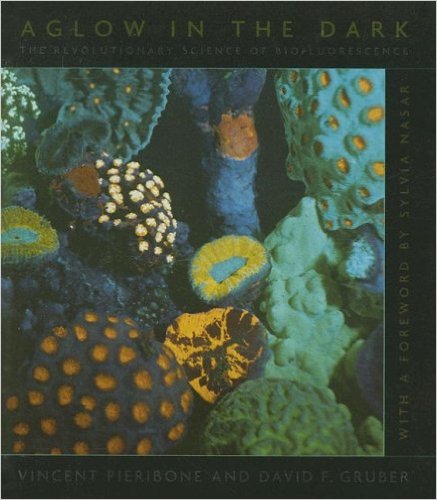





























































































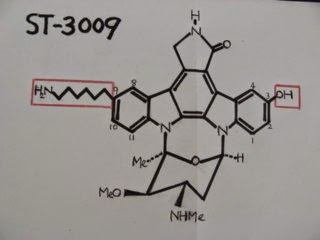







































![アルニカ [ウサギ菊]](https://blogger.googleusercontent.com/img/b/R29vZ2xl/AVvXsEilqv0qou-4NpoUh1PFWYK0FSaozKazee0VYGxsFtfjBma46ya9yxqB6X9Ziuob25tNRpBbnFIcUFlOEjz1WcAjVNzjGl1E-QbDgE7VOLkjZDx0eplJ1WJHf0fTEWXxf8F5G-cHUhqHELY9/s1600/ArnicaS.jpg)








































































































































.jpg)
































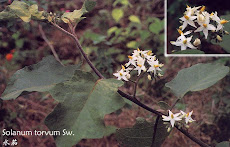







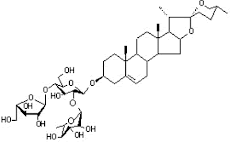































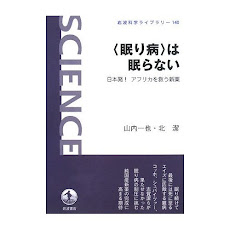












.jpg)















































